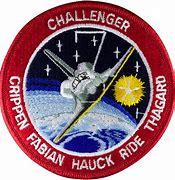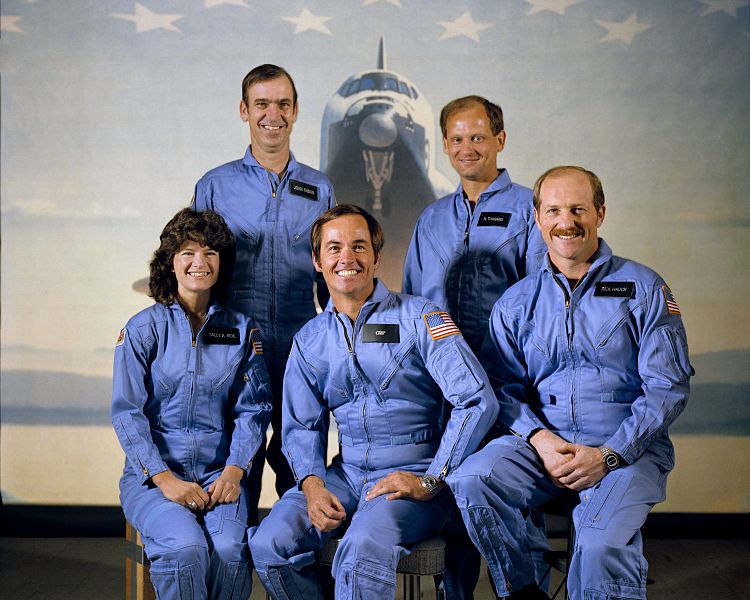Command Pilot:
Robert L. Crippen
(Second Space Flight)
Frederick H. Hauck
(First Space Flight) Mission Specialist 1:
John M. Fabian
(First Space Flight) Mission Specialist 2:
Sally K. Ride
(First Space Flight) Mission Specialist 3:
Norman E. Thagard
(First Space Flight)
STS-7 was a NASA Space Centre mission, during which Space Shuttle Challenger deployed several satellite into orbit. The shuttle launched from Kennedy Space Centre on 18 June 1983, and landed at Edwards Air Force Baseon 24 June. STS-7 was the seventh shuttle mission, and was Challenger's second mission. It was also the first American spaceflight involving a female astronaut.
(Second Space Flight)
STS-3
Astronauts:
The Space Shuttle Missions
STS-7
Pilot:
Study
Research
Space Cosmology
Science Research
*
About
Science Research
Science Theories
Desk
Site Map
BookShelf
Copyright © by Nigel G Wilcox · All Rights reserved · E-Mail: ngwilcox100@gmail.com
Designed by Nigel G Wilcox
Powered By AM3L1A
Pages within this section: USA Shuttle Mission Flights
STS-7
Pages within this section:
1
M
8
SM
Sub-Menu
menu
2
3
4
5
6
7
8
9
Support Crew
John E. Blaha
Roy D. Bridges Jr. (ascent CAPCOM)
Guy S. Gardner
Terry J. Hart
Jon A. McBride
Bryan D. O'Connor (entry CAPCOM)



Two communications satellites – Anik C2 for Telesat of Canada, and Palapa B1 for Indonesia – were successfully deployed during the first two days of the mission. The mission also carried the first Shuttle Pallet Satellite, SPAS-1, which was built by the West German aerospace firm Messerschmitt-Bolkow-Blohm. SPAS-1 was unique in that it was designed to operate in the payload bay or be deployed by the Remote Manipulator System (RMS) as a free-flying satellite. It carried 10 experiments to study formation of metal alloys in microgravity, the operation of heat pipes, instruments for remote sensing observations, and a mass spectrometer to identify various gases in the payload bay. It was deployed by the RMS and flew alongside and over Challenger for several hours, performing various maneuvers, while a U.S.-supplied camera mounted on SPAS-1 took pictures of the orbiter. The RMS later grappled the pallet and returned it to the payload bay.
STS-7 also carried seven GAS canisters, which contained a wide variety of experiments, as well as the OSTA-2 payload, a joint U.S.-West German scientific pallet payload. Finally, the orbiter's Ku-band antenna was able to relay data through the Tracking and Data Relay Satellite to a ground terminal for the first time.
STS-7 was scheduled to make the first Shuttle landing at Kennedy Space Center's then-new Shuttle Landing Facility. However, unacceptable weather forced a change to Runway 15 at Edwards AFB. The landing took place on June 24, 1983, at 6:57 am PDT. The mission lasted 6 days, 2 hours, 23 minutes, and 59 seconds, and covered about 2.2 million miles during 97 orbits of the Earth. Challenger was returned to KSC on June 29.
Data Courtesy Wikipedia.org













